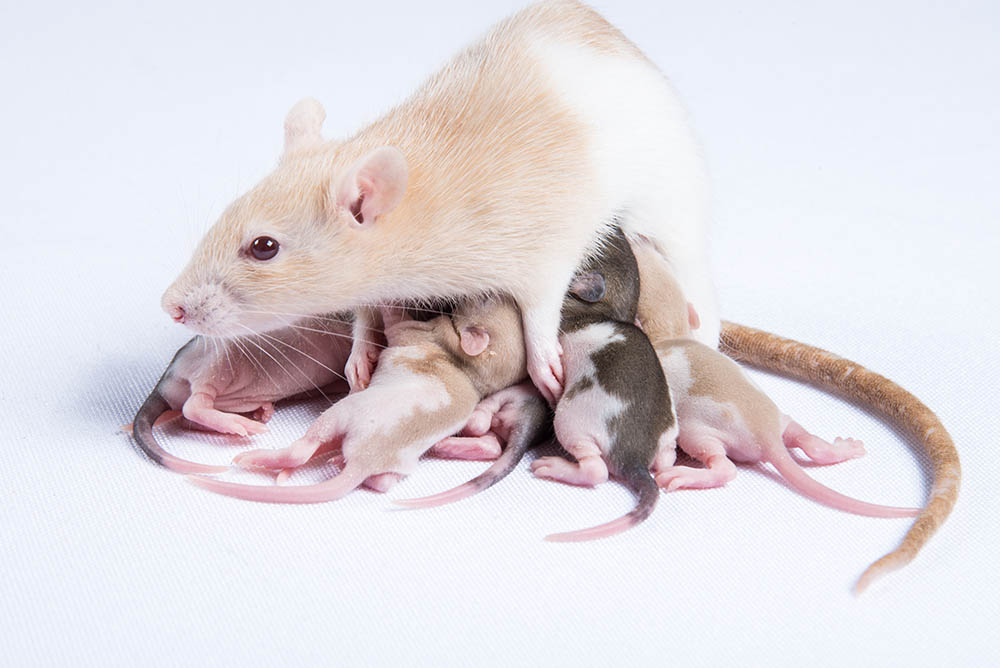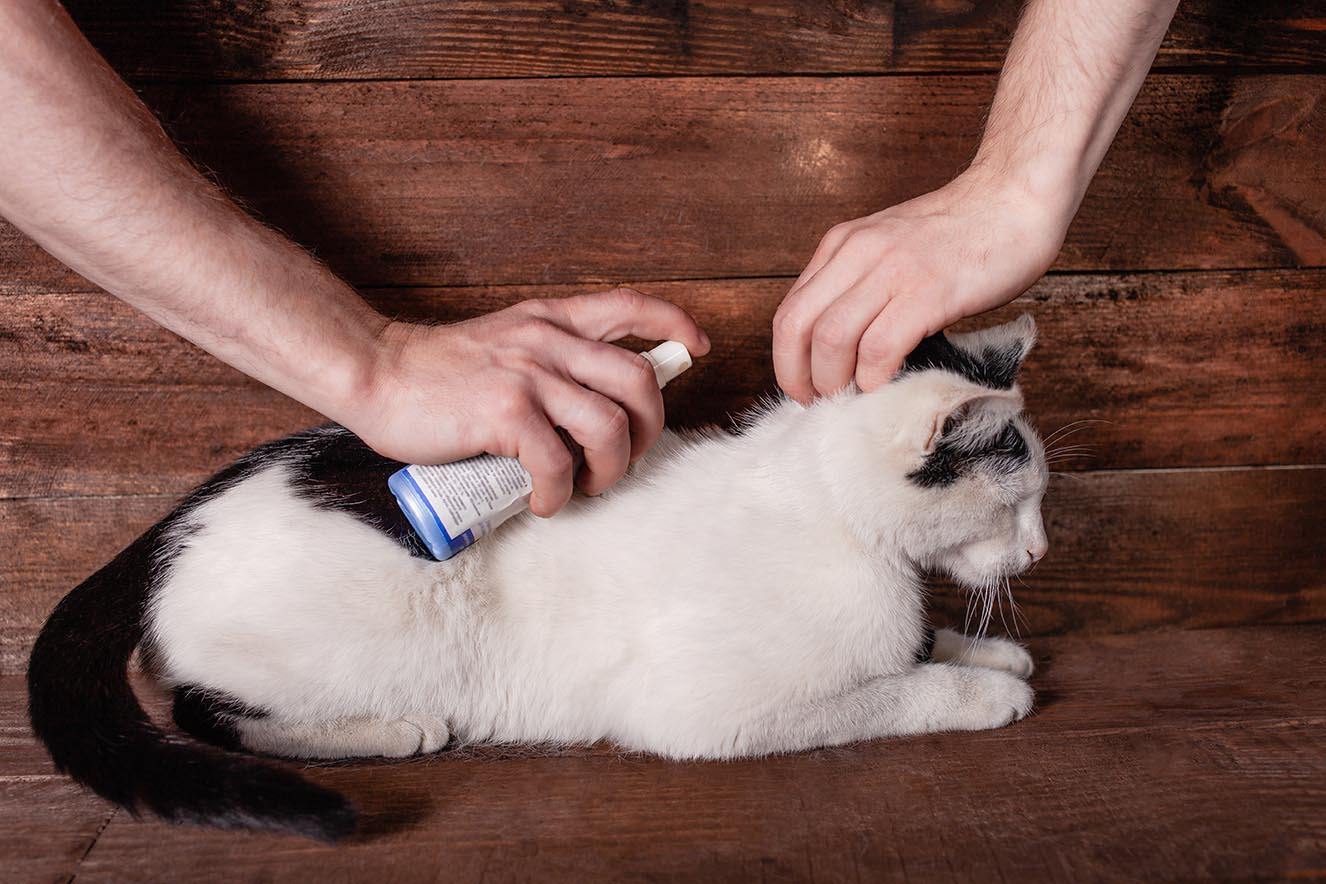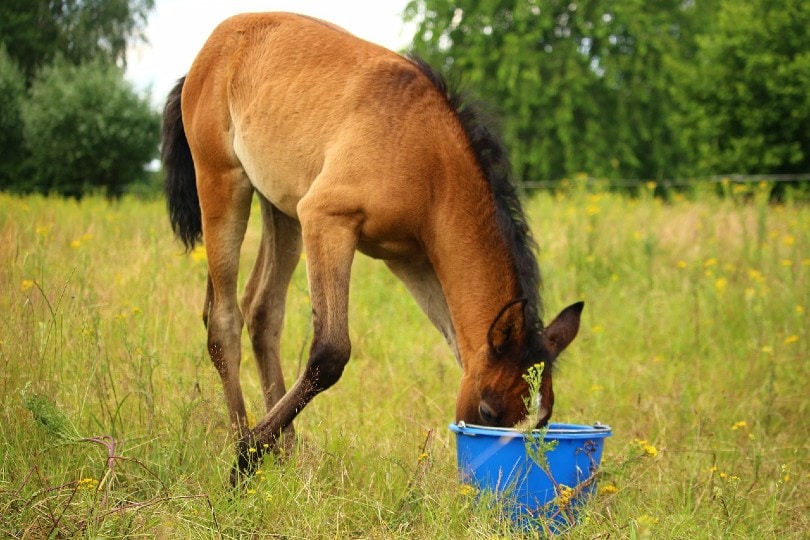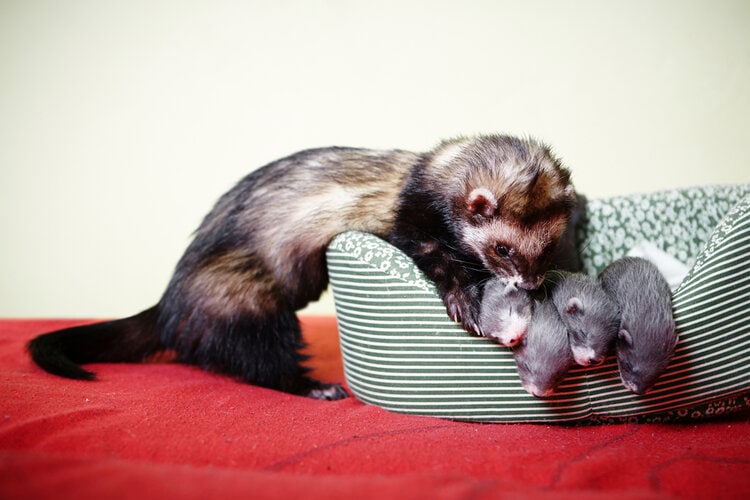Typically, a female rat will give birth to anywhere from 8 to 18 pups per litter. Their reproductive cycle starts at a young age; female rats reach sexual maturity within their first 8 to 12 weeks of life and start having heat cycles every 4 to 5 days. Once they become pregnant, they have a relatively short gestation period of approximately 21 to 23 days. The female will give birth, and then, around the 21-day mark, the pups will be weaned.
Female rats can enter heat within 48 hours after giving birth to become pregnant again. To maintain the health of the breeding female, it’s not healthy for her to be pregnant and nursing at the same time. Rats can give birth every 3 to 5 weeks if opposite-sex rats are not housed separately. If you’re breeding your rat in captivity, it’s recommended that a female rat should be given at least 2 months between pregnancy and litter raising to restore her health after birth.

Materials for Nesting
If your pet rat is pregnant, she will seek sufficient nesting materials to house her litter. Cages should be made of material that can resist rodent chewing and is easy to clean. Wire floors can cause damage to rodent paws and should be avoided. Rats prefer solid nest boxes to clear nest boxes and prefer long strips of paper as nesting materials. Bedding should be changed frequently on a regular cage cleaning schedule.
Ammonia, an odor-causing gas, can build up in bedding that is not cleaned, making your rat ill and potentially affecting the health of the pups. This is one of the reasons that aquariums are not recommended for rats; there is little to no air circulation to prevent ammonia fumes from building up and making the rodent ill. Ensure your rat has plenty of fresh water and food during her pregnancy, so the pups are born healthy. After weaning, it’s best to remove the pups and separate them based on sex to prevent further pregnancies from developing.
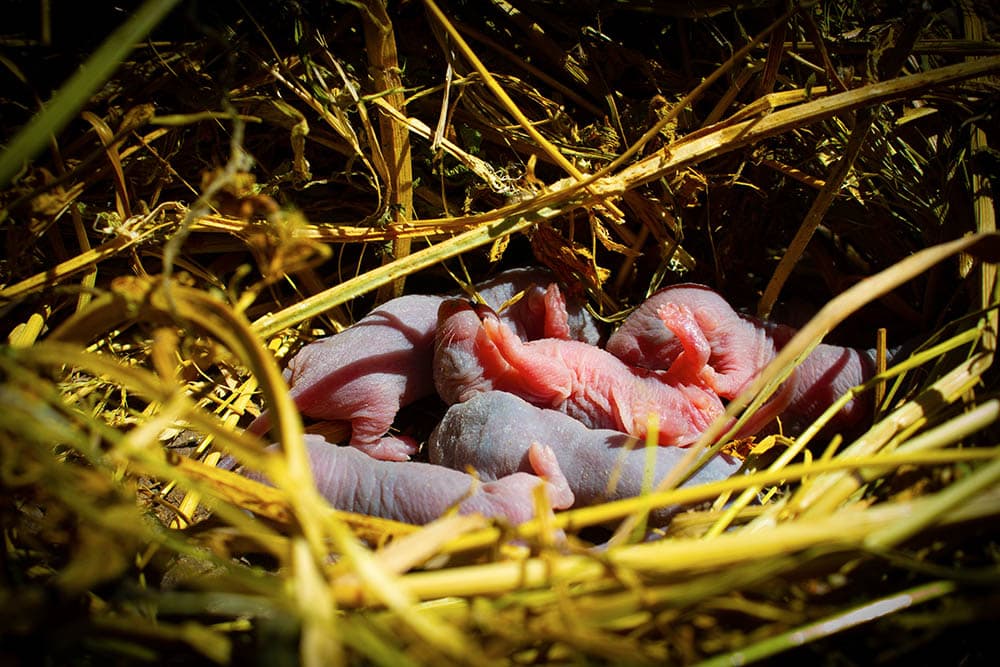
The 8 Fun Facts About Rats
Now that you know all about the reproductive cycle of the rat and what nesting materials an expecting rat will need, here are a few fun facts:
- Baby rats are born blind and deaf.
- Rats are constant gnawers because their teeth grow continuously throughout their lives. If they don’t chew, their teeth can become overgrown and cause issues with eating, dehydration, and weight loss.
- Rats are nocturnal and are most active at night.
- They are very social and enjoy grooming their cage mates.
- Rats can develop isolated-rat stress syndrome if they are left alone without environmental enrichment, such as toys for mental stimulation, exercise, and human contact.
- Rats are active and love to play and exercise. Cage toys are recommended, and an exercise wheel will provide mental stimulation as well as prevent obesity.
- Rats practice coprophagy, which means they eat the fecal pellets (poop) off the floor of their cages. Rats with a nutritionally complete diet eat approximately 10% of their feces. Pregnant rats will eat feces pellets more often than non-pregnant rodents.
- Cage mates eat each other’s feces, which helps them develop an odor unique to their colony, allowing them to easily tell who belongs to their colony and who does not.
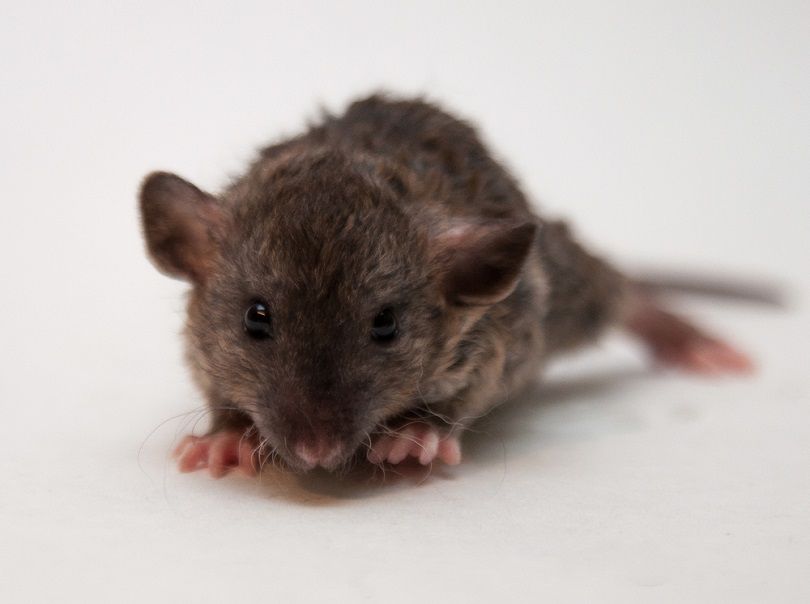

Conclusion
Rats can give birth to anywhere from 8 to 18 babies per litter. Moreover, they reach sexual maturity very quickly and can reproduce not long after having a litter. This is important to remember if breeding rats, intentionally or accidentally, as it can quickly get out of control if you aren’t prepared. We hope this article helped you learn more interesting facts about a rat’s pregnancy.
- https://www.merckvetmanual.com/all-other-pets/rats/breeding-and-reproduction-of-rats
- https://www.vancouverwildlife.com/rats/rat-facts/
- https://www.merckvetmanual.com/exotic-and-laboratory-animals/rodents/mice-and-rats-as-pets
- https://www.merckvetmanual.com/all-other-pets/rats/routine-health-care-of-rats?query=rat%20teeth
- https://www.merckvetmanual.com/all-other-pets/rats/providing-a-home-for-a-rat?query=rats
Featured Image Credit: Liukov, Shutterstock
